The Federal Reserve System stands as an enigmatic pillar of the U.S. financial landscape, its inner workings often shrouded in mystery.
Let’s uncover some key insights about this crucial entity that wields tremendous influence over the country’s monetary policies.
Are Federal Reserve Banks Truly ‘Federal’?
In name only. Contrary to popular belief, these banks are not government-owned entities.
They’re private stock corporations, owned entirely by other private corporations known as member banks.
In essence, they’re as ‘federal’ as any other privately owned enterprise.
Discover the Layers: Eustace Mullins’ ‘The Secrets of the Federal Reserve’ Peels Back the Veil on the Monetary System, Exposing Hidden Realities and Providing Unique Insights.
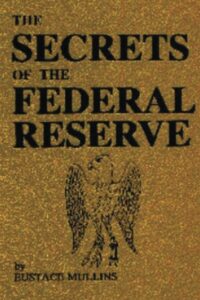
Government and the Federal Reserve System
The United States government doesn’t own any stock or partake in the profits generated by the Federal Reserve System.
This separation between the government and the Federal Reserve underscores the private nature of these institutions.
Understanding the Federal Reserve Banks
Across the U.S., the country is divided into 12 regions, each hosting a Central Bank known as a Federal Reserve Bank. These include hubs like the Federal Reserve Bank of Chicago, New York, Dallas, St. Louis, and more.
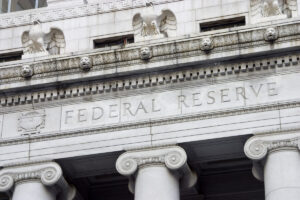
The Role of Member Banks
Member banks are your local banks, the ones where you conduct your day-to-day financial transactions.
These banks are required to purchase a stake in the Central Bank of their district, a stake equivalent to 6% of their outstanding capital stock.
Unveiling the Real Purpose
Behind the veil lies a key purpose: to grant a select few individuals the power to dictate when local banks can expand or contract the volume of money in circulation.
Essentially, it centralizes authority over monetary policy in the hands of a few private entities.
Comparisons to Europe’s Central Banks
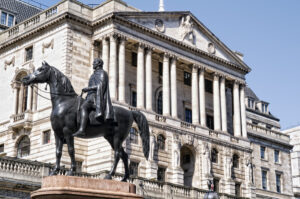
Similar to Europe’s privately owned Central Banks like the Bank of England and the Bank of France, the Federal Reserve operates under private ownership and manipulation.
This historical perspective illuminates the control these entities wield over economic landscapes.
Bound by Federal Reserve Mandates
Local bankers are not free to exercise independent judgment. They’re compelled to either increase or decrease their loans according to mandates from the Federal Reserve, irrespective of their own assessments.
Discover the illuminating insights of ‘Wealth, Virtual Wealth and Debt: The Solution of the Economic Paradox‘ by Frederick Soddy.
In a world fraught with economic complexities, Soddy’s exploration offers a beacon of clarity, unraveling the mysteries of wealth, debt, and the societal implications. Join the quest for understanding and empowerment in the face of economic turmoil
Mandatory Inclusion
While initially optional for state-chartered banks, the landscape has changed.
National Banks must be members of the Federal Reserve System, and recent financial programs and structures have made it increasingly challenging for state banks to remain outside the system.
Understanding the inner workings of the Federal Reserve System is pivotal for comprehending the forces that shape the country’s financial policies.
It’s an intricate system, often opaque, yet understanding its dynamics can offer insights into the mechanisms that drive our economy.
Deciphering the Leverage of Federal Reserve Control”
The Federal Reserve, an institution central to the nation’s financial dynamics, holds more sway than meets the eye.
Let’s delve into the key mechanisms wielded by the Federal Reserve Bankers and the substantial influence they have over our financial ecosystem.

Tools of Control
The Federal Reserve Bankers possess several means of manipulating local banks:
- Gold Base Adjustment: They can alter the gold base by shipping gold out of the country.
- Re-discount Rate Changes: Manipulating the rate at which member banks can borrow from the Federal Reserve.
- Open Market Operations: The buying and selling of government securities to influence the money supply.
Leveraging Reserves
When local banks exhaust their existing reserves, they can turn to the Federal Reserve for support.
Using John Jones’ note as collateral, a local bank can borrow from the Federal Reserve, effectively expanding their reserves on the Federal Reserve’s books.
However, these loans typically involve the Federal Reserve lending promises rather than actual money.
Central Federal Reserve’s Money Creation
The Central Federal Reserve Banks create money through bookkeeping entries.
They purchase government bonds from member banks by debiting Federal Reserve Credit and crediting Deposits, effectively adding to member bank reserves.
The Global Financial Leverage
The Federal Reserve Bankers are dubbed ‘international bankers’ due to their ability to influence various facets:
- Exporting gold from the country.
- Manipulating international loans.
- Exerting control over government bonds.
The Overwhelming Power
Their greatest power lies in their ability to compel local banks to retract loans, effectively erasing money from existence.
This action can lead to widespread bankruptcies and financial turmoil across cities and states.

Selection of Borrowers
The Federal Reserve Banks dictate which business entities can borrow from member banks.
They wield the power to decide which loans are acceptable, effectively shaping the business landscape.
Impact on Small Businesses
This concentrated power to determine borrowers’ eligibility can stifle small enterprises, as they might struggle to secure loans while larger corporations gain precedence.
The Currency Conundrum
Federal Reserve Notes, the bills we carry daily, represent practically all the currency in use today.
Yet, they are merely promises to pay money, built on a complex web of lending promises and interests collected on owed money.
Acquisition of Federal Reserve Notes
Member banks obtain these notes by pledging government bonds to the United States Treasury.
These bonds are used as collateral, allowing the banks to acquire Federal Reserve Notes without paying interest on the currency received.
Understanding the intricate mechanisms and powers held by the Federal Reserve Bankers shines a light on the complex dynamics that govern our financial systems.
It’s a system based on promises, lending, and the intricate web of financial leverage.
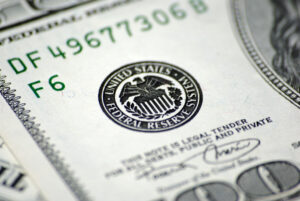
Unveiling the Deceptive Dynamics of Federal Reserve Control
The Federal Reserve System, an intricate web of private entities wielding immense financial power, remains shrouded in mystery for many.
Understanding its intricate workings unveils a system built on deception and control, largely unbeknownst to the general public.
Explore the provocative theories in ‘The Federal Reserve Conspiracy‘ by Eustace Mullins. Delve into Mullins’ controversial narrative, alleging a clandestine alliance of powerful figures behind the creation of the U.S. Federal Reserve System.
Uncover Mullins’ compelling arguments, challenging conventional views on economic history and the forces shaping global finance. A thought-provoking read for those intrigued by the shadowy corridors of power
The Deceptive Inscription
Federal Reserve Notes, the bills we handle daily, carry an engraving claiming, “The United States of America will pay to the bearer $5.00 on demand.”
This inscription, meant to mislead, implies that these notes originate from the U.S. Government.
In truth, they bear interest as they are backed by interest-bearing bonds, revealing a system designed to confuse and deceive.
Lack of Understanding
The enduring nature of this dishonest practice is largely attributed to public ignorance.
The masses, unaware of the mechanisms at play, accept these notes as legitimate currency, oblivious to the underlying control wielded by private institutions.

Tax Exemptions and Privileges
Federal Reserve Banks enjoy exemptions from federal, state, and local taxes, akin to exemptions granted to large private corporations.
Their taxation is limited to negligible real estate taxes, insignificant in comparison to the substantial financial privileges they wield.
Centralization of Power
Key takeaways underline the centralized control held by Federal Reserve Banks:
- Private Ownership: The Federal Reserve Banks are owned by private corporations, not the government.
- Money Creation: They create money lent to member banks.
- Reserve Manipulation: Control over member banks’ reserves gives them the power to trigger economic downturns.
- Currency Distribution: Member banks receive currency from the Federal Reserve Banks.
- Cost-Free Bonds: Federal Reserve Banks acquire bonds at minimal costs, utilizing them as collateral to print currency at no expense.
The Pervasive Deception
This system operates on deceptive principles, enabling private entities to exert significant control over the nation’s financial landscape.
The engraving on Federal Reserve Notes aims to persuade the public of their legitimacy while masking the true nature of their origins and interests.
Understanding these intricacies illuminates the complex and controversial reality of the Federal Reserve System, a system deeply embedded in financial control and cloaked in deceptive practices.
Delve into the pivotal insights of ‘The Bankers’ Conspiracy: Which Started the World Crisis‘ by Arthur Kitson. Recognized as a culturally significant work, this meticulously researched narrative unveils the intricate mechanisms behind a global crisis.
Now freely available to all, Kitson’s analysis offers invaluable understanding of historical events crucial to our civilization. Explore and uncover the truth within these pages.
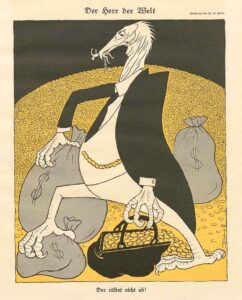
Unveiling the Veil: A Call for Clarity in the World of Finance
Understanding the intricate mechanisms of the Federal Reserve System is a pivotal step toward financial literacy.
This revelation sheds light on a system designed to operate behind a veil of confusion and deception, controlled by private entities with substantial influence.
To embark further on the journey of unraveling the mysteries surrounding money and finance, delve into our next blog post, where we demystify the complexities of debits, ensuring a clearer understanding of the fundamental principles governing our financial world.
Join us as we continue exploring the intriguing landscape of monetary questions and seek clarity on the mechanisms shaping our economic reality.
